Mong Cai porcelain, Huong Canh jar “Whoever comes to buy a Huong Canh jar/For the mai tree to marry the bamboo tree, for me to marry the lady…”
The folk song reminds us of a village with a famous pottery craft. With an age of more than 300 years, Huong Canh pottery village (Binh Xuyen district, Vinh Phuc province) has long been famous for its household items such as jars, urns, jars, urns, earthenware urns... The characteristic of Huong Canh pottery lies in its strong, rustic appearance and burnt brown skin. This unique beauty is thanks to the natural sedimentary materials deposited locally.
The soil of Huong Canh is said to have a high iron oxide content, so it has a better smoothness and less "bones" than other lands. After a careful kneading process, the soil becomes flexible, easy to thin without cracking. Huong Canh pottery kilns burn wood, the fire directly hits the product with different strength and amount. The "coincidence" of the firewood has created a surface of the product that is sometimes shiny, sometimes matte, with different levels of darkness and lightness, which is extremely attractive. Although the finished Huong Canh pottery is unglazed, it is very resistant to water penetration, when tapped it makes a clear and ringing "clinking" sound.
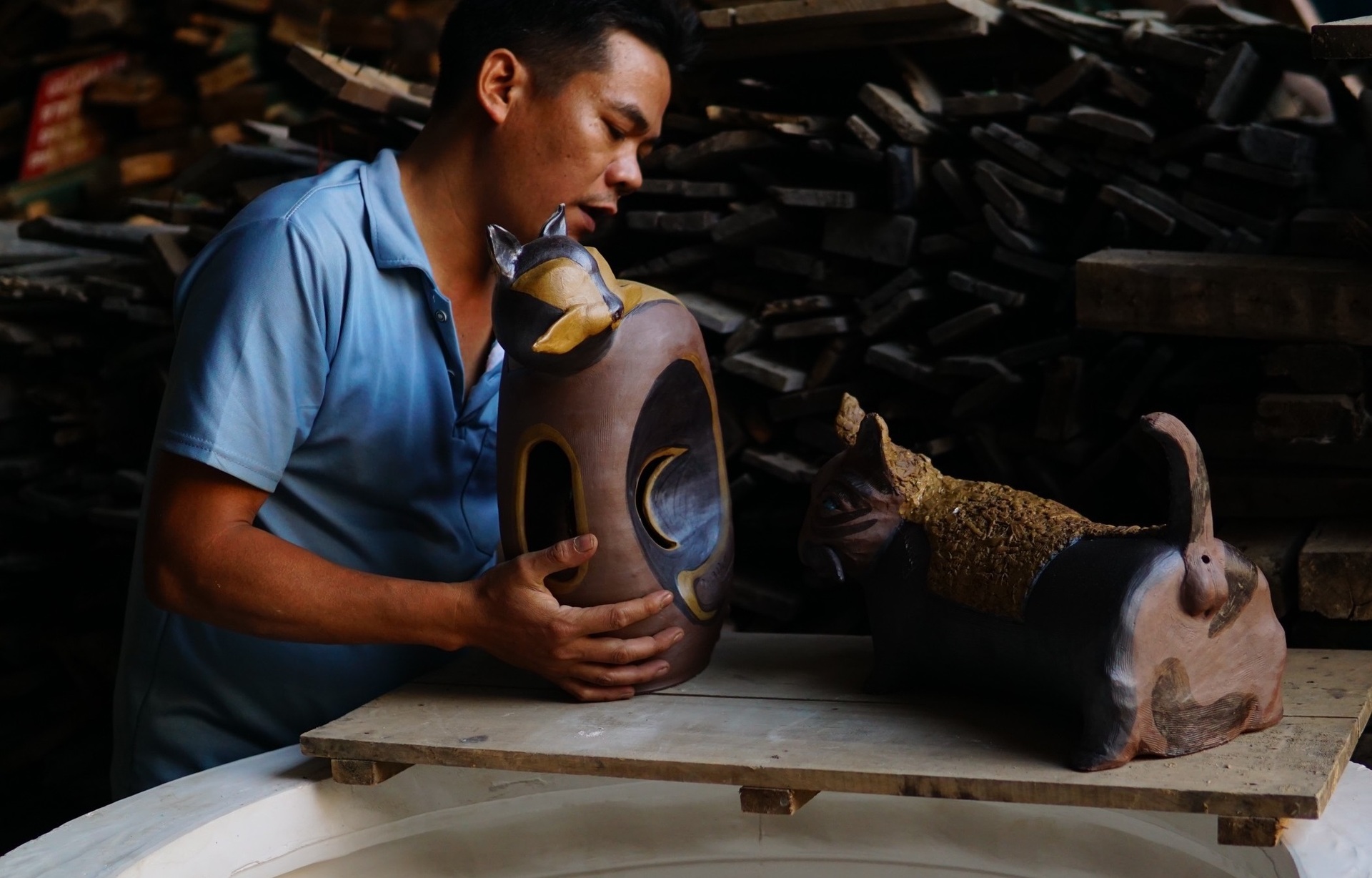
Nguyen Hong Quang and a ceramic art work that he is fond of.
As an artist with many years of experience working with Huong Canh pottery, painter Le Thiet Cuong believes that earthenware has a rustic, simple, and folk look, with a lot of village, country, and Vietnamese qualities. When Vietnamese people pickle vegetables, they use Huong Canh earthenware jars instead of Bat Trang porcelain. When pressing vegetables, they still have to use Huong Canh earthenware plates on top before placing heavy objects on them. Fermenting soy sauce in Huong Canh earthenware jars will produce the best soy sauce. Wine must also be stored in Huong Canh earthenware jars because earthenware jars from other places are easily permeable, and glazed pottery is too airtight, causing "the yin and yang, water and earth are not in harmony", making the wine taste bad.
“The jars of pickled vegetables, the pots of braised fish, the jars of soy sauce, the jars of seeds hanging in the kitchen, that is the soul of the Vietnamese people, the culture of Vietnam… Huong Canh household ceramic wares are the portrait of village life, of civilized agricultural life, of the Vietnamese mentality” – artist Le Thiet Cuong commented.
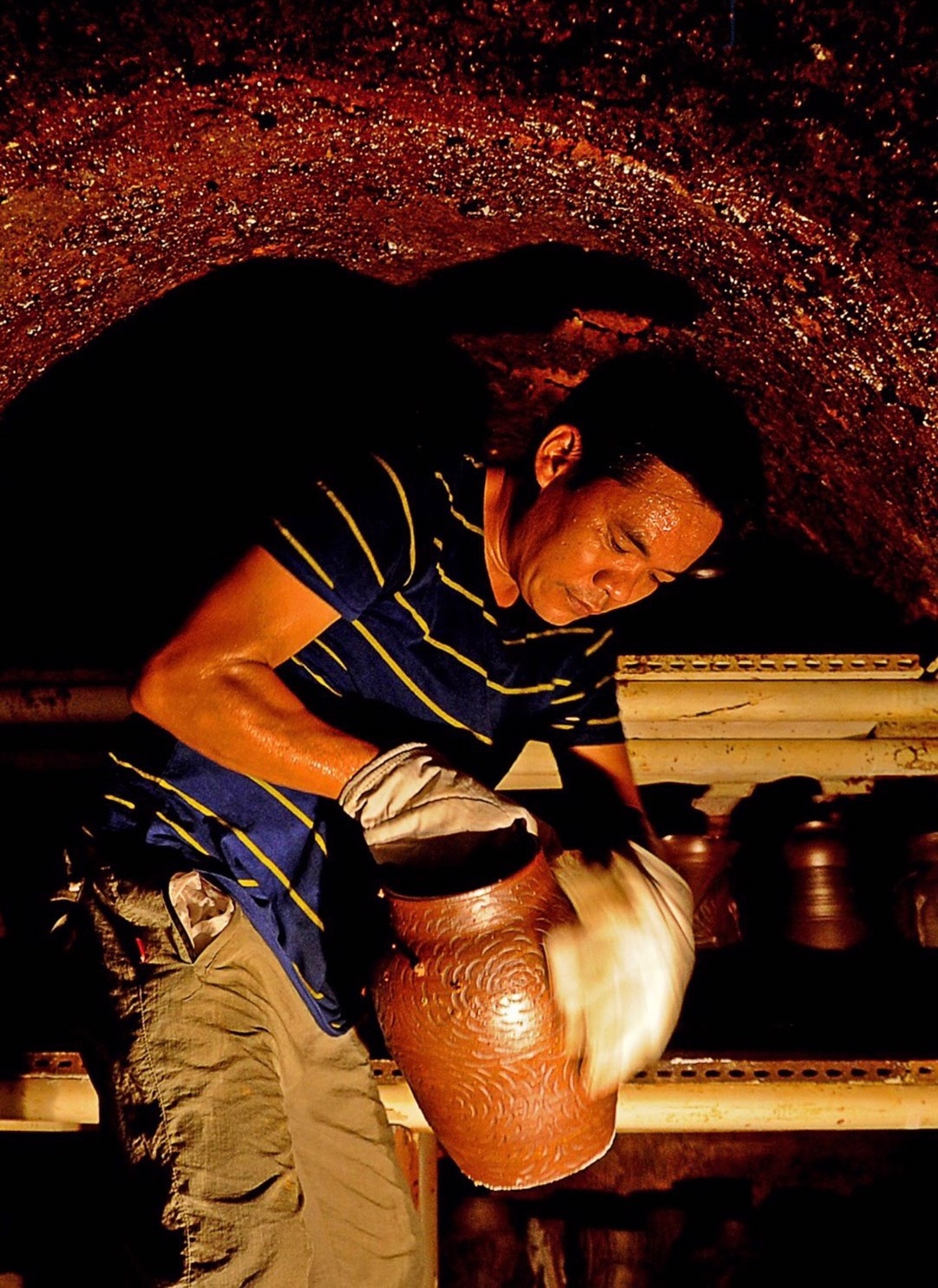
Artist Nguyen Hong Quang checks a newly released ceramic product.
If you want to go far, you can't "hang around in jars and pots"
Although it has become so famous that it has entered the folk subconscious, Huong Canh pottery cannot be completely suitable for modern life. When aluminum, plastic, stainless steel products that are durable, light, cheap and convenient are more present in life, household pottery gradually declines and disappears.
Artist Le Thiet Cuong regrets that many Huong Canh ceramic products have been lost, but more worrying is the risk of traditional values gradually fading away. This is a problem that not only occurs in Huong Canh but is also the reality in most traditional craft villages. There, craftsmen follow the model taught by their predecessors as a value, leading to a product that is "still the same" for dozens or hundreds of years. Now, when society changes, design is still the weak link, not to mention the distant story of a creative industry.
“No one can convince a young couple who just bought an apartment to spend money on a ceramic jar of pickled vegetables to display flowers. If we want traditional values to survive in today’s life, the product must have a modern breath through fine art,” said Mr. Le Thiet Cuong.
According to artist Nguyen Hong Quang - who comes from a family with 3 generations of famous pottery makers in Huong Canh - the transition from household pottery to applied pottery and art pottery did not happen overnight. Nearly 30 years ago, witnessing artists working in his pottery workshop, the young man could not understand why such beautiful, round vases and jars were so hard-won to distort and skew them?
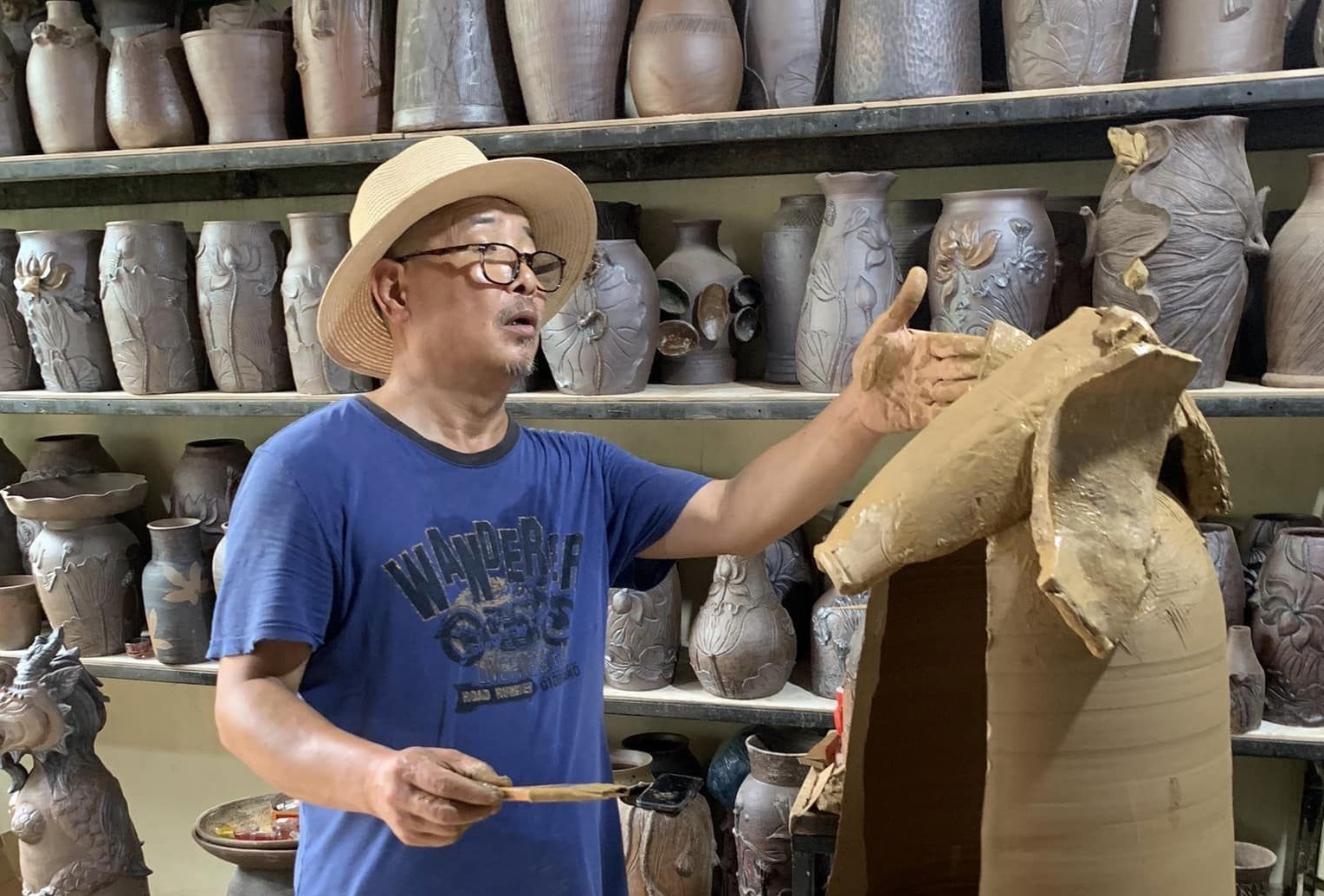
Quang Pottery Workshop is where many artists "try their hand" at unglazed ceramic materials.
“Growing up and studying fine arts, at a time when traditional pottery was in decline, I saw more clearly that bringing art into pottery had greatly enhanced the value of ceramic products. If Huong Canh pottery wanted to go far, it could not just be about jars and pots, but needed artistic value in each product. That was also the reason I returned to my hometown, living and dying with the profession ” – Mr. Quang expressed.
Since the Quang Ceramics workshop opened, Huong Canh has become a place where artists often visit. Nguyen Hong Quang dedicated a space of about 100 square meters for artists to work, building rooms for 6 people so they can stay for a long time. Many generations of artists have come to Huong Canh to "play" with ceramics: Le Duy Ngoan, Nguyen Trong Doan, Vu Nham, Tran Khanh Chuong, Le Ngoc Han, Le Ngoc Ly... Each artist has a different perspective and ideas, some are strong in reliefs, some are inclined towards statues, some only make applied ceramics such as decorative lamps, wall paintings, vases, jars...
“From traditional to contemporary ceramics, there are many different paths and each person has their own way. What I clearly feel when leading artists come to the studio to create is the artistic thinking and the way of creating shapes, the way of handling materials of each person… This is extremely valuable practical knowledge ” – Quang said.
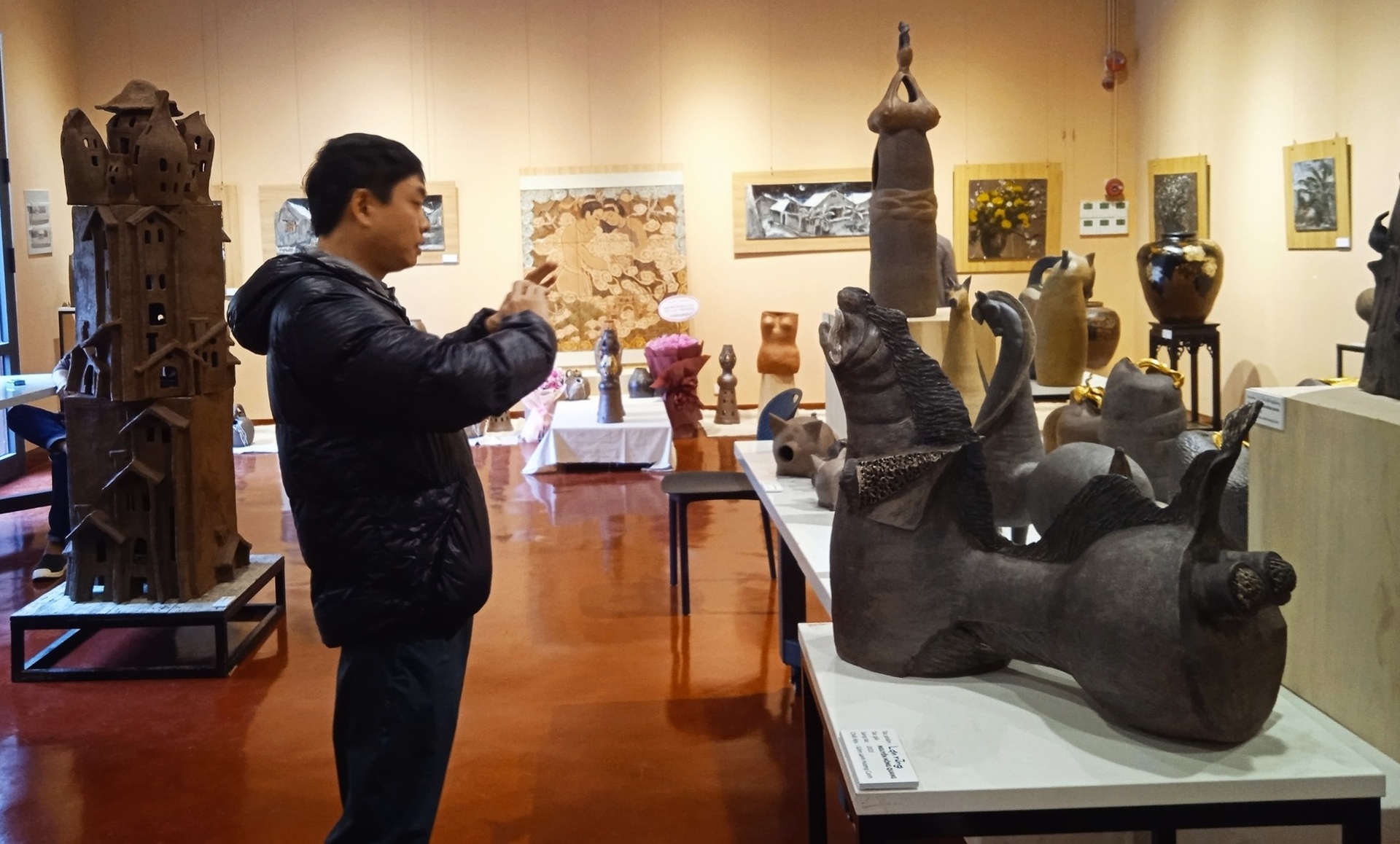
The public visits an exhibition of Huong Canh pottery.
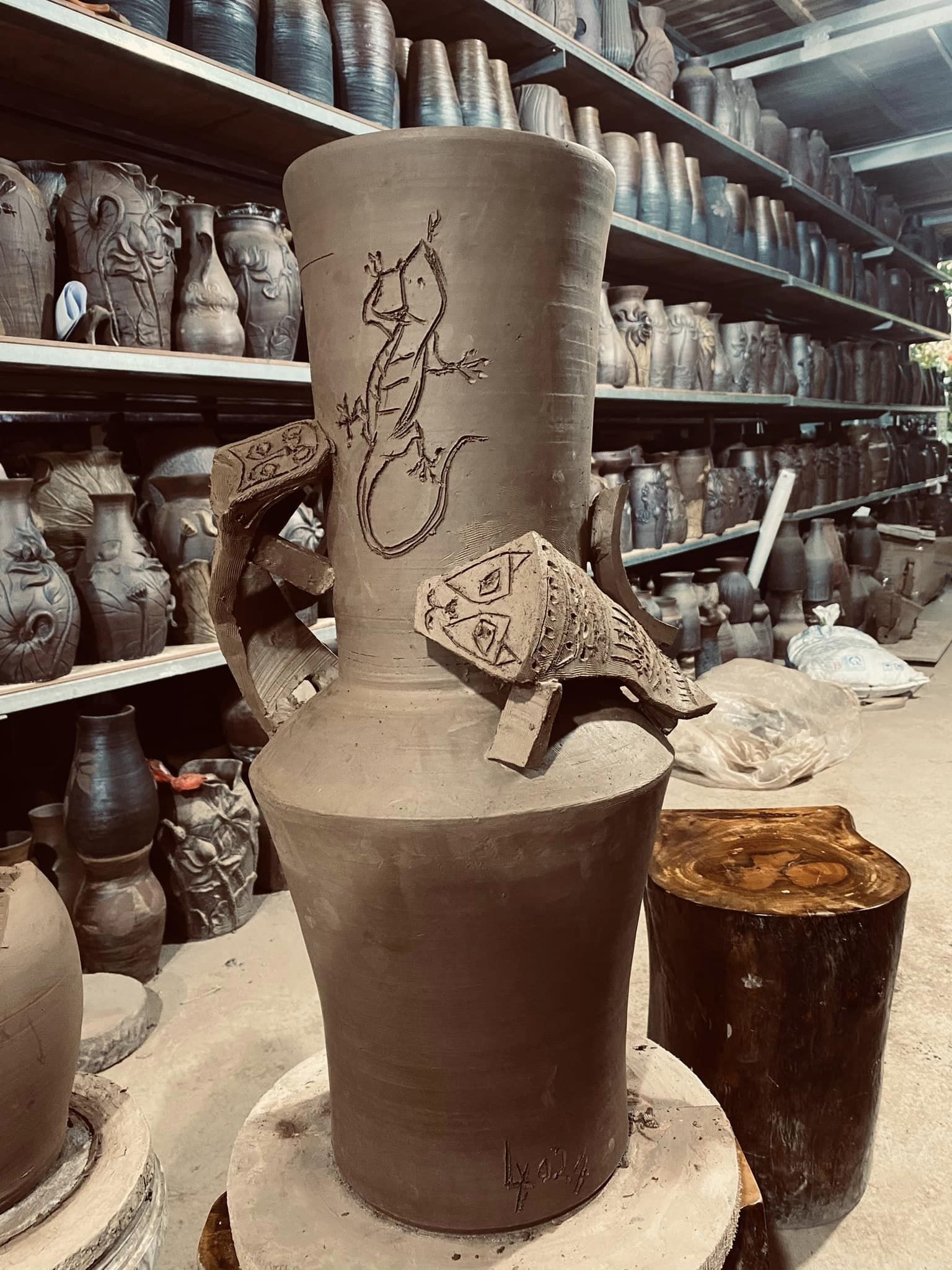
A work by artist Le Ngoc Ly.
Nowadays, traditional Huong Canh ceramic products at Quang Ceramics workshop only account for a very small proportion, which Nguyen Hong Quang said was done to preserve tradition. On the contrary, for applied ceramics or art ceramics, the workshop produces thousands of products each month. With new shaping methods, Huong Canh ceramics have appeared more in art exhibitions. Applied ceramic products have expanded their markets to provinces and cities: Hanoi , Hai Phong, Quang Ninh, Ho Chi Minh City... Quang proudly said that not only his family lives well from the profession, but the remaining ceramic kilns in the village have also gradually overcome the crisis.
“In the past two years, Huong Canh ceramics have participated in 6-7 large and small group and solo exhibitions. The public response has been quite good, I have heard many people in the industry say that Huong Canh ceramics have returned to the map of Vietnam. Currently, we are planning to cooperate with a number of artists to bring Huong Canh ceramic art products to sell directly abroad” – artist Nguyen Hong Quang shared.
According to artist Le Thiet Cuong, the new works of art created from traditional materials, traditional craftsmanship and methods show that Huong Canh pottery has a continuity between tradition and contemporary. In that process, “the soy sauce jars, medicine pots, pickle jars… of traditional Huong Canh are in dialogue with new and different Huong Canh pottery. It is still Huong Canh but a new Huong Canh of the spirit of decoration, painting and pottery – sculpture”…
“The story of Huong Canh is also a story about heritage preservation, craft village preservation, a story about cultural industry, a story about the connection between artisans and designers, artists. Preserving traditional heritage, making tradition present in modern life through art, that is the most sustainable way of preservation” – painter Le Thiet Cuong concluded.
The Vu







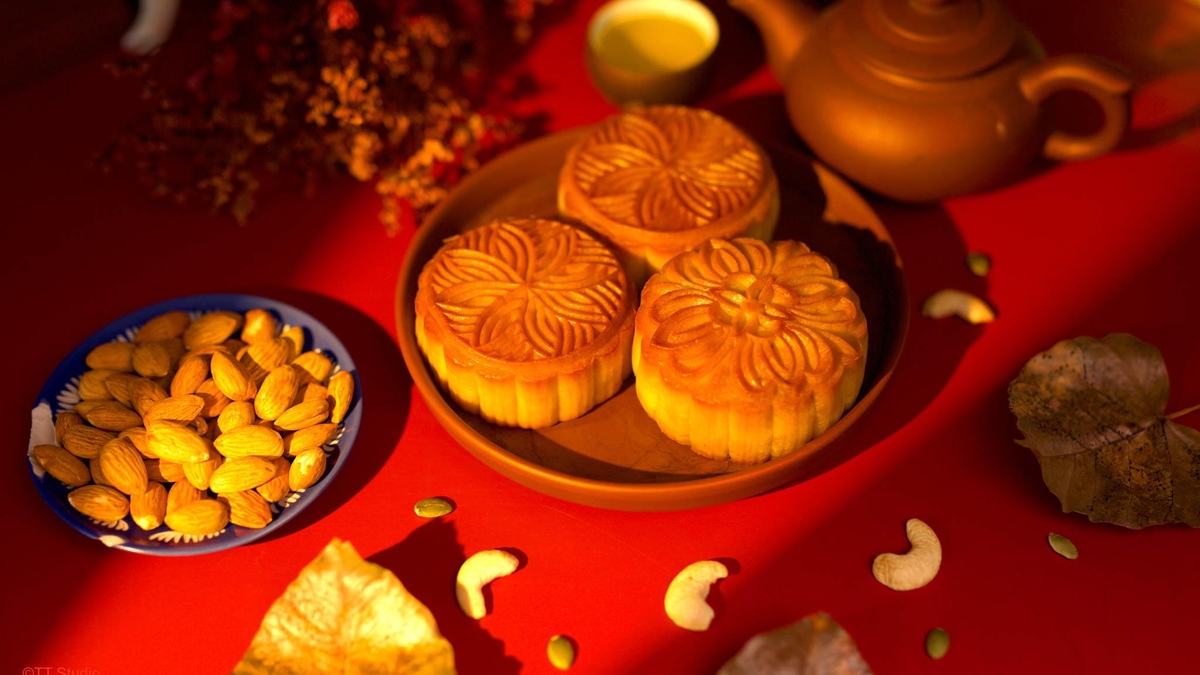




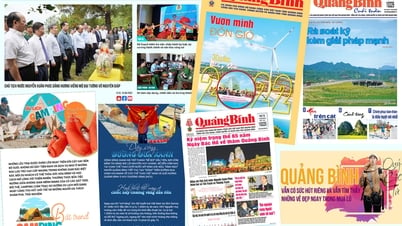

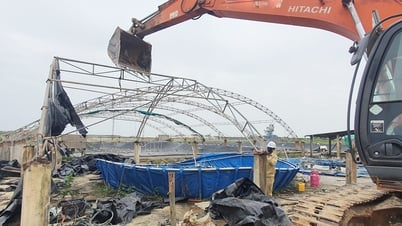
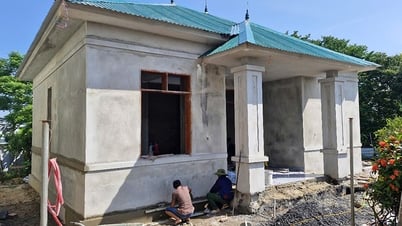










![[Photo] Prime Minister Pham Minh Chinh receives Secretary of Shandong Provincial Party Committee (China) Lin Yu](https://vphoto.vietnam.vn/thumb/1200x675/vietnam/resource/IMAGE/2025/9/26/821396f0570549d39f33cb93b2e1eaee)










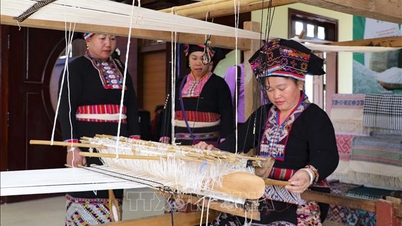

















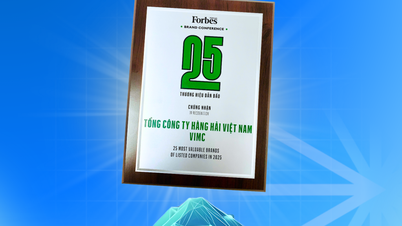
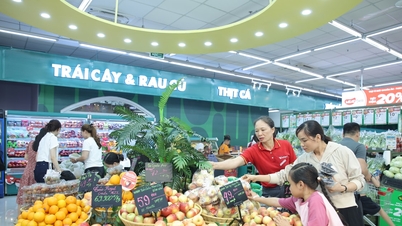











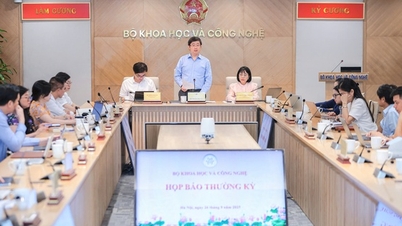











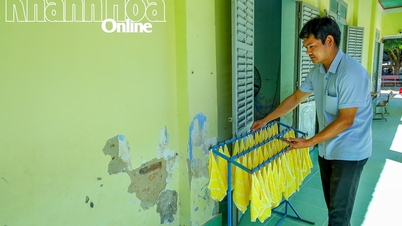



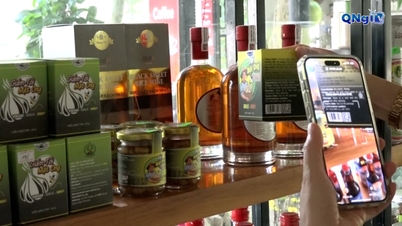

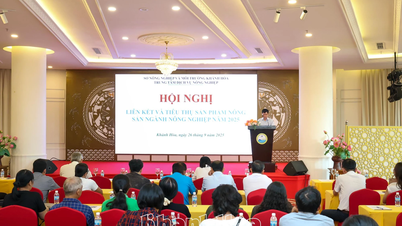








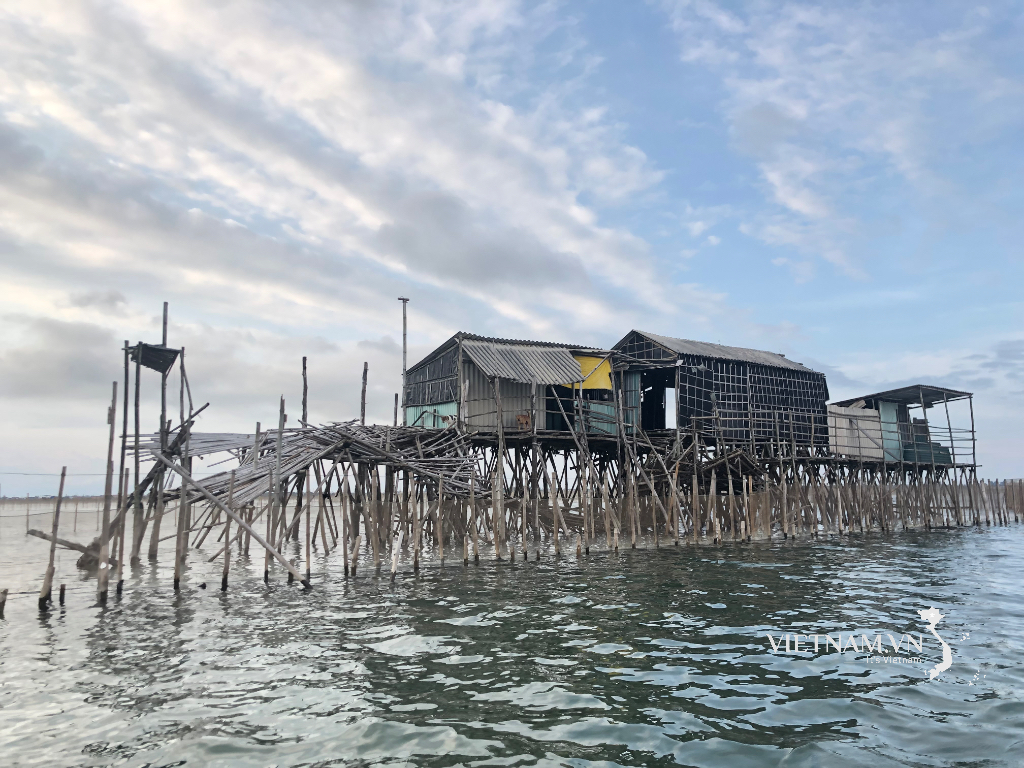
Comment (0)